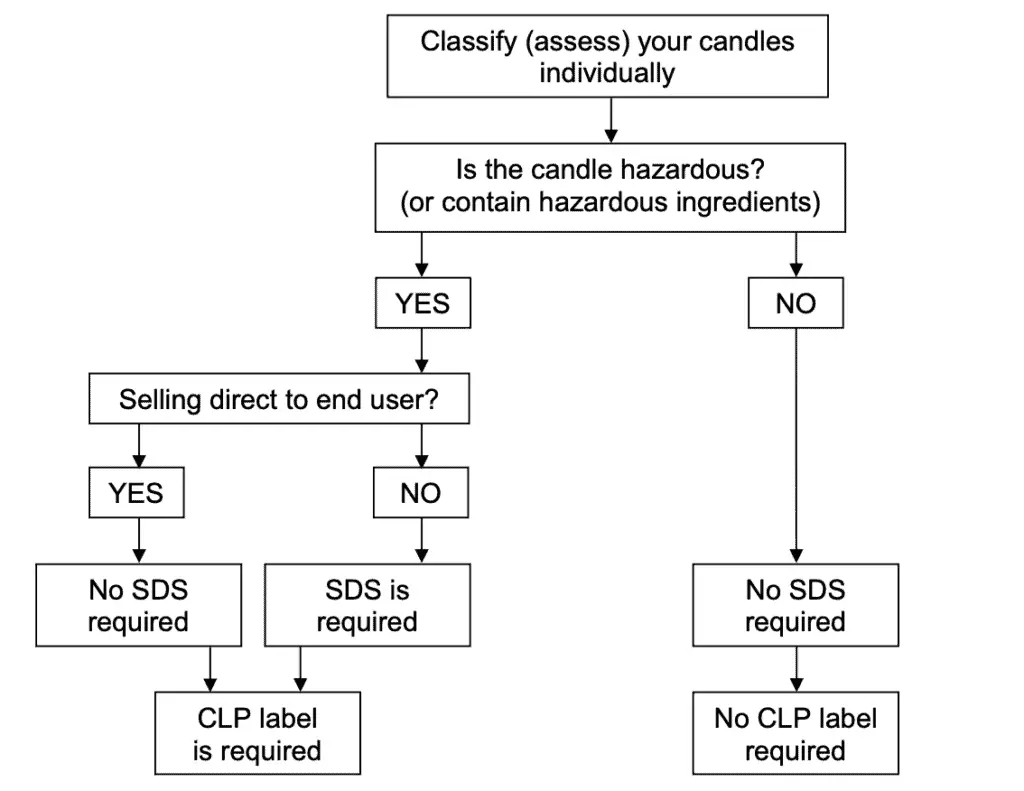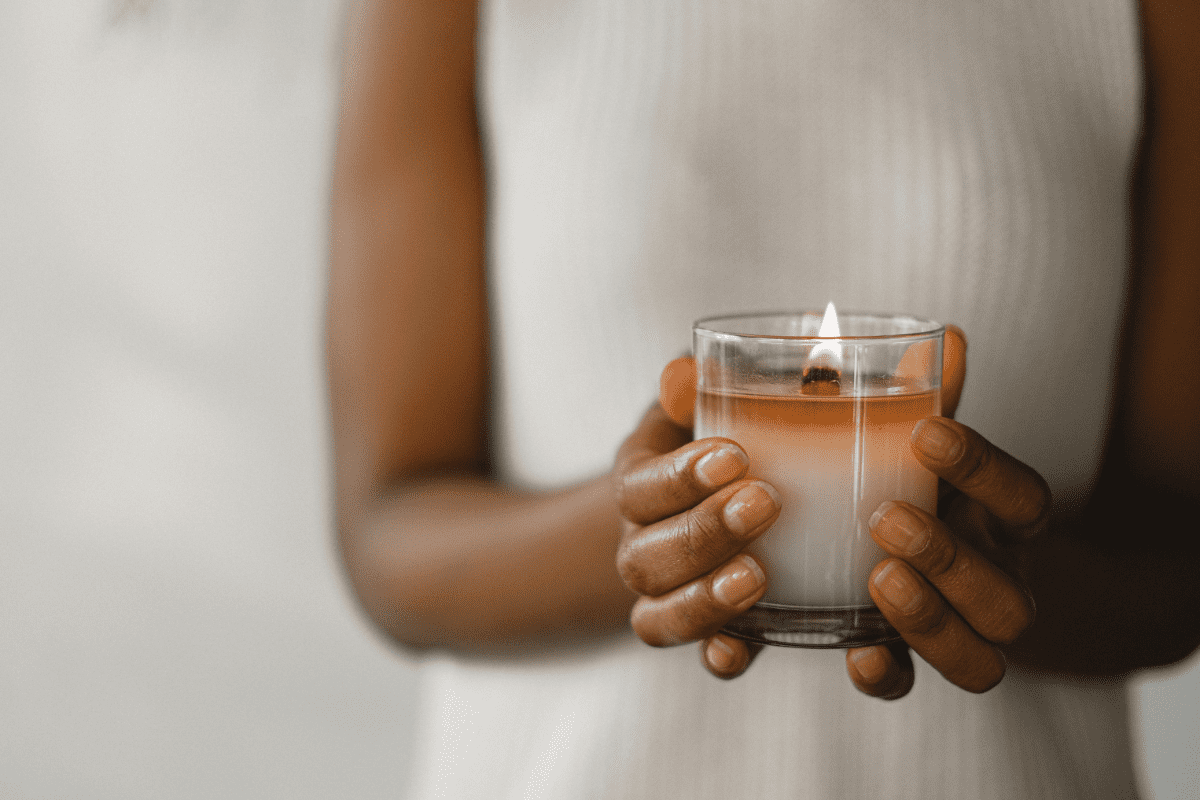There are many kinds of candles around us, some organic with delightful scents, and some made with paraffin wax with lovely bright colours. There is also so much information on using candles safely. Still, we noticed that the explanation is pretty shallow, and some warnings, like the one about the burning time limit, won’t apply to all the candles on the market.
Candles made with paraffin wax, artificial dyes, and fragrances have a burn limit of approximately 3 or 4 hrs because they create indoor pollution. When a candle burns, it releases a large amount of carbon monoxide and dioxide, sulfur dioxide and benzopyrene, which can cause health warnings.
Organic candles don’t create all that indoor pollution as artificial ones do; however, there might be other warnings to keep in mind for them as well. So we’ve collected a top-five list of best practices to enjoy or let your customer enjoy candles in the most gentle way possible!
Enjoy the following read, and then light your favourite candle up!
Top 5 Burning Warnings
How many times did you glance over a warning label without reading it? Countless times, but since we started producing ours and understanding what happens when you lit a candle, we found it helpful to create a system to both create and enjoy candle safely but also to provide warnings for our customers.
1. Burning Time Limit
There are two reasons why the burning time has limits:
- the first is the one mentioned above; after a while, the candle creates indoor pollution that might bring dizziness and more severe health issues if repeated daily.
- the second one is a side effect of burning a candle: the mouth of the candle and its container get hot, compromising the burn and the scent.
This second point is vital to grasp because burning a candle for too many hours can compromise its scent if it uses organic essential oils, which we know well from our previous post how their temperature influences scents so much.
As a rule of thumb, we would encourage sticking to the two hours mark burning time limit.
2. Supervised Burning
The point is obvious, but please read this extract from the US Fire Administration:
“Annually, an estimated 23,600 fires in residences are caused by candles and result in 1,525 civilian injuries, 165 fatalities, and $390 million in direct property loss.”
Keep a candle in the room where you or someone else is present. For example, if someone rings the door or you are about to leave the room, just put out the candle; it doesn’t take much time to do and might prevent massive warnings.
3. Find a Safe Sport for the Candle to Burn
Deciding where to place a burning candle is yet another quite obvious remark to read, but again I want to point out the extract at point two.
Things are a bit more complicated if we have kids or pets that can enter the room with a candle lit unsupervised and poorly placed, they could burn themselves or cause fire hazards by randomly spilling the how wax or flame on flammable surfaces.
Another point to consider, which is less scary (it’s becoming a bit too anxious this blog post), is if the candles are close to an airflow that might disrupt the candle’s burning process. What I mean with this is that having the flame moved in all directions by the airflow compromises the candle’s mouth burning it unevenly, causing dark smoke to come out of the wick and an overall wrong burning process.
4. Take Care of the Wick
We wrote a lot about wicks and how to ensure the candle is optimized while it burns. However, I want to add something in this post about wicks, which is related to point one, the burning time limit.
The more it burns, the more the candle wick deteriorates. Its deterioration brings it to the so-called “mushroom” shape that compromises the whole burning process.
It’s essential to trim the wick, not only the first time but also when you notice that the wick is deforming. Just a little reminder: Wicks should always be cut to ¼ inch (around 6mm) using a pair of scissors, snippers, or even nail clippers.
5. Airflow
We mentioned airflow as a risk in point three. However, it’s also essential to fight the indoor pollution of point one. The secret is to ensure the room is ventilated without air blowing to the flame.
Just make sure NOT to position your candle in the airflows, so the flame keeps doing its job without propagating too much pollution in a closed room.
After putting out the candle, you can leave the room and open a window to change the air and eliminate potentially dangerous micro-substances.
Legal or Not: When a Warning Label is Mandatory
As candle makers, we must be aware of several things, including what happens to the materials we use when the burning process is active and how to protect our business from improper use of our products by our customers.
The first point concerns understanding if we use organic or artificial products and what happens to those products if we burn them. The primary decision for us was to use all organic materials from wax to wicks and essential oils to reduce the impact in terms of pollution.
It’s a greener choice, but it’s our choice – nobody blocks you by making fabulous paraffin candles with flashy dyes and artificial fragrances, it’s your choice, and there is a massive market out there to exploit.
The only thing is, if you decide to do those types of candles, be aware of the legal demands you must comply with within your country. Regulations change in the EU, UK & US, but most require a warning label to meet the industry standards.
The best research you could do is this one (Ahah, sorry, I always wanted to do that).
Even if regulation varies, here you can find a helpful flowchart to help you assess which kind of warning to add to your creations:

SDS stands for Safety Data Sheet, while CLP stands for Classification, Labelling & Packaging.
Regulation will give you a detailed list of things to add depending on the flowchart; however, those are the most common elements:
- Product identifiers
- Hazard pictograms
- Hazard statements
- Allergen information
- Signal words
- Precautionary statements
- Supplier information (your business address and contact number).
For our candles, what we do is, since we only sell them locally, we create some simple bullet points within the label with warnings like those highlighted in the top five above.
Those are the bullet points we use if you want to copy and paste for your labels:
- Burn within sight.
- Keep away from flammables.
- Keep away from children and pets.
- Trim the wick every time.
- Burn for 2hrs max.
Enjoying Your Burn Time, Safely
Sometimes looking at safety and regulations let us forget about the real meaning of creating but also using candles, and at least for us is to enjoy the moment, the soothing atmosphere they create.
The good thing about all these warnings is that once you’ve studied the regulation, figured out if your ingredients and materials are hazardous and what is not and written the labels accordingly, you have done it! It’s a one-off full immersion.
I remember it well; it took us one weekend to make ours; we spent it reading those boring pdfs and bureaucratic jargon to come up with the list above for our products, and we have been good to go since then.
We strongly encourage you to block your calendar only on this specific task and tackle it all at once, so you can quickly return to creating beautiful candles.



